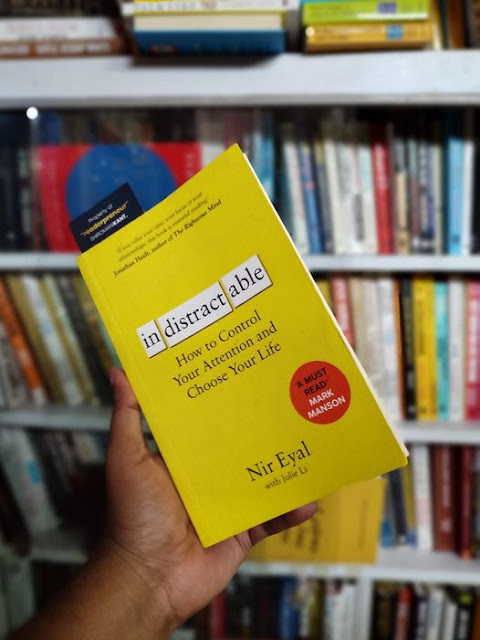Master focus and beat distraction with key lessons from Indistractable by Nir Eyal. Learn how to control your attention and live intentionally.
Indistractable: How to Control Your Attention and Choose Your Life by Nir Eyal is a powerful and insightful book that explores how to thrive in an age of endless distractions. In today’s world, where technology constantly competes for our attention, this book provides clear, actionable strategies to regain focus and lead a more meaningful life.
Eyal sheds light on the deeper causes of distraction—not just external noise, but internal triggers like stress, boredom, and emotional discomfort. Drawing from psychology, personal experience, and scientific research, Indistractable equips readers with tools to take control of their attention, improve their relationships, boost productivity, and create space for personal growth.
This is more than a book about avoiding distractions—it’s a practical guide to designing a life of intention. By learning how to manage your internal world and create an environment that supports your goals, you’ll be able to focus on what truly matters.
"Time management is about thinking through your values, deciding what you want to do with your time, and taking the steps to make those values a reality." —Nir Eyal
Lessons from Indistractable: How to Control Your Attention and Choose Your Life
Here are the most powerful lessons from Nir Eyal’s Indistractable:
1. Understand the Real Cause of Distraction
Distractions often come from within. Emotional discomfort—boredom, stress, anxiety—drives us to seek quick escapes. Recognizing this is the first step toward regaining control.
2. Master Internal Triggers
Use techniques like “surfing the urge” to sit with uncomfortable emotions instead of reacting impulsively. Acknowledge your feelings, and learn to respond thoughtfully.
3. Timebox for Traction
Plan your day using the “timeboxing” technique. Allocate time for everything that matters—work, rest, relationships—so distractions don’t hijack your schedule.
4. Optimize Your Environment
Minimize external triggers by silencing notifications, organizing your digital space, and creating a distraction-free workspace that encourages deep focus.
5. Build an Indistractable Schedule
Design your week with intention. Weekly reflection helps you track progress, identify distractions, and realign your schedule with your values and goals.
6. Use Precommitments for Accountability
Create "pacts" with yourself or others to stay committed. Whether it’s a social contract or a self-imposed barrier, precommitments increase follow-through.
7. Watch Out for Ludic Loops
Tech companies exploit psychological loops to keep us hooked. Recognize these patterns and disrupt them by setting clear boundaries around technology use.
8. Create a Productive Workspace
A cluttered or noisy environment fuels distraction. Redesign your space to support concentration and help you stay aligned with your priorities.
9. Be Present in Relationships
Distraction doesn’t just affect work—it impacts relationships too. Make a conscious effort to be fully present when spending time with loved ones.
10. Reflect and Improve
Regularly assess your distractions and what triggers them. Self-reflection is key to long-term growth and becoming truly indistractable.
"The best way to fight the impulse to give in to our desires is to deliver on our promises to ourselves and others." —Nir Eyal
Quotes from Indistractable: How to Control Your Attention and Choose Your Life
Here are some standout quotes from Nir Eyal’s Indistractable:
-
“The antidote to impulsiveness is forethought. Decide what you'll do before temptation arises.”
-
“Being indistractable means doing what you say you will do. It’s about being fully present and living your values.”
-
“You can't call something a distraction unless you know what it's distracting you from.”
-
“Time management is pain management. We avoid tasks not because they’re hard, but because they’re emotionally uncomfortable.”
-
“Living the life you want means mastering the internal triggers that lead to distraction.”
-
“Distraction is a temporary escape from discomfort.”
-
“The more you take responsibility for everything in your life, the more control you gain.”
These quotes capture the essence of Eyal’s message: to live a focused, intentional life, we must understand our behaviors, master our emotions, and prioritize actions that align with our deepest values.













COMMENTS